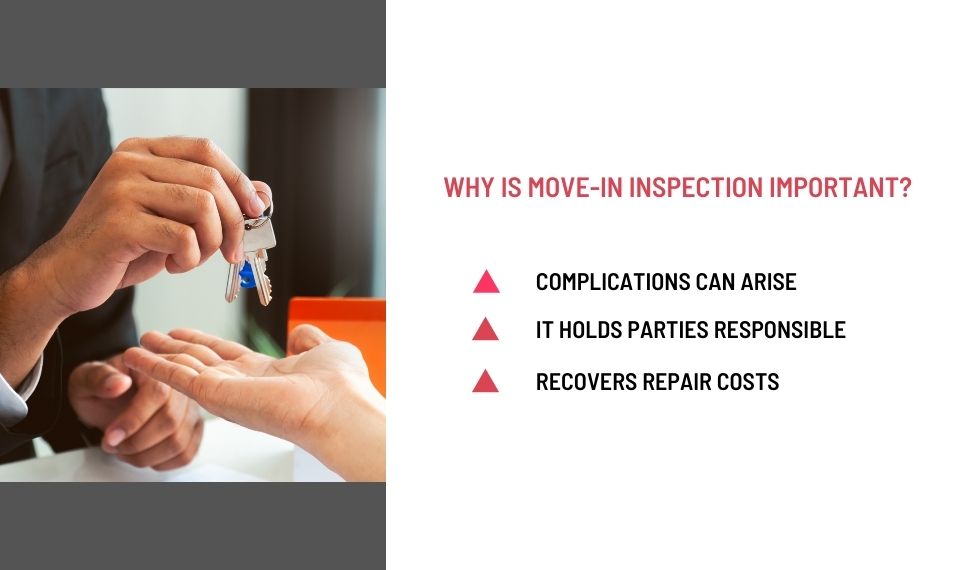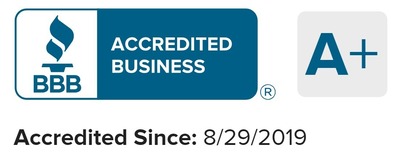A Property management inspection is some of the best insurance a property owner can have against a tenant tearing up their Oklahoma City rental property.
For example, I have a 4-bedroom house I have leased out to a family with a Section 8 voucher. We had a work order performed at the property to fix a heating problem. After completing the work order, the technician conducted a maintenance inspection.
The maintenance inspection indicated that the tenant was putting big holes in the sheetrock. As a result, we requested Section 8 housing OKC to inspect the property, which is the first step in getting that tenant out of the property.
In this article, I am going to talk about the rental Inspection guide for landlords. Also, I have listed all essential types of home inspections.
Here is your Rent ready checklist to attract your tenants.
Why Do Landlords Do Inspections?
Landlords need to conduct regular property inspections within the boundaries of the law and with proper notice to the tenants, as tenant privacy and rights are also important considerations. The frequency of inspections and the notice period required may vary based on local laws and the lease agreement terms. Here are some common reasons why landlords perform property inspections:
Property Maintenance: The property is an asset for landlords that should be well-maintained. Inspections allow them to identify the property’s condition and address maintenance issues, preventing minor problems from turning into expensive repairs.
Preventing Lease Violations: Inspections are only the way landlords can ensure tenants abide by the lease agreement terms. This includes verifying that the property is being used as intended and that tenants are not causing damage or engaging in prohibited activities.
Tenant Compliance: Inspections allow landlords to verify that tenants comply with the lease agreement’s terms. This includes checking that tenants are not causing excessive damage, making unauthorized alterations, or violating any other terms outlined in the lease.
Health and Safety Compliance: Landlords are responsible for making their rental property meet safety standards. Inspections allow them to identify potential safety hazards such as faulty wiring, leaks, or other issues that could endanger the tenants.
Also, learn about Section 8 rules and regulations for landlords.
5 Common Types of Rental Inspections
I’ll go over these different types of rental inspections below. In a related article, I talk about when and why to do real estate home inspections.
The Pre-Tenancy Inspection
A pre-tenancy inspection is an important step in the rental process that sets the tone for your relationship with your tenant. It provides an opportunity to thoroughly assess the property and identify any issues needing attention before the tenant moves in. While it is important to consider the big picture, such as structural issues, paying attention to the finer details, like a stain on the carpet or a leaky faucet, is equally crucial.
During the inspection, it is recommended to ensure that all appliances are in proper working condition. Test each one to make sure they are functioning as expected. Additionally, be diligent in checking for signs of mold or pests, as these can pose health risks to your tenant and may require immediate attention. Assessing the overall cleanliness of the property is also important, as it sets expectations for the tenant regarding the level of cleanliness they should maintain throughout their tenancy.
To ensure a thorough and organized inspection, it is advisable to carry a checklist with you. This checklist can include checking the condition of each room, inspecting the windows and doors for any damages, and examining the plumbing and electrical systems. By following a checklist, you can ensure that no aspect of the property is overlooked, and you can confidently address any issues that arise.
Documenting the Condition of the Property
Once you have completed the pre-tenancy inspection and gathered all the necessary information about the condition of your property, it is crucial to document it properly to settle any disputes that may arise in the future. It is highly recommended to include photographs that accurately capture the state of each room, as well as any existing damages or areas of concern.
Sharing these documented records with your tenant can also be beneficial. By providing them with a clear understanding of the property’s condition at the start of their tenancy, you are encouraging them to take responsibility for maintaining the property in good condition throughout their stay. This transparency can help establish a sense of trust and cooperation between both parties, ultimately leading to a more harmonious landlord-tenant relationship.
Remember, the pre-tenancy inspection and proper documentation are not just about protecting your interests as a landlord but also about ensuring that your tenant has a safe and comfortable living environment. You are setting a solid foundation for a successful tenancy.
The Move-In Inspection
The Move-In property inspection is performed when a tenant moves in. The purpose is to create a record of the initial conditions of the property when the tenant moves in.
If we are starting management on a property, it’s where we determine what needs to make the property ready to rent. And, verify that all the make-ready repairs are completed.
As we discussed, the move-in inspection is a deal with both the landlords and tenants. If there is any damage to the property at a particular time, the tenant takes settlements that are agreed to by both parties.
Why Move-in Inspection is Important?
It is necessary to conduct move-in inspections every time a new tenant moves in.

Recovers Repair Costs
Property management OKC recommends you collect a security deposit from your new tenants at the start of their lease term. This helps you to comprise any costs associated with damages to the property. Not only that, this is to cover early lease termination and any unpaid rent on the part of your tenants.
To use your tenant’s security deposit to cover the damages, you will need to have proof. The evidence that those damages didn’t exist at the time your tenants moved in.
There is one condition where you and your tenants sign a document. This is to agree on the property’s original state at the beginning of the lease term. If the property looks very different from its original state at the end of the lease term, you got legal proof. Now you can collect from your tenant’s security deposit to make necessary repairs.
Get to know the renters insurance Oklahoma
It Holds Parties Responsible
Move-in inspection holds every important party. The landlord, property manager, and tenants are responsible for any condition. Any situation at the time of move-in, during the lease term, and at the end when the tenant moves out.
By having your tenants sign the move-in inspection, you set a clue that you expect them to care for your property. And if they make any damages, they will be held liable.
Complications that can arise from not conducting a Move-in Inspection
You are going to get into trouble if you don’t make a home inspection agreement before the tenant moves in. You may have a problem compelling them to finish it properly.
Once a tenant starts to move in, the property’s original condition has become altered, possibly damaged. There will be no proof of when the damage occurred.
You might run the risk if you let your tenant complete the inspection without you or your property manager. Simply, risk of extra things being added to the lists that are not there.
Neglecting specialized inspections altogether makes settling the security deposit for repairs impossible.
Here is the Section 8 Inspections Checklist to Pass an Oklahoma City Section 8 Inspection for the first time.
Routine Inspections During Tenancy
Once the tenant has settled in, routine inspections aim to maintain the standards of your rental property and help property owners fulfill their responsibilities. These inspections provide an opportunity to ensure that lease terms regarding property upkeep are followed. It’s also a chance for landlords to spot any unauthorized changes to the property.
During these routine inspections, landlords can assess the property’s overall condition. They can check if the tenants are following proper cleaning practices, such as regularly vacuuming and dusting, to prevent the build-up of dirt and allergens. Additionally, inspections allow landlords to ensure tenants properly maintain any appliances or fixtures in the rental agreement.
Furthermore, routine inspections allow landlords to address potential safety hazards to extend the property’s lifespan and avoid expensive repairs in the long run. They can check if smoke detectors and carbon monoxide alarms are properly working, ensuring the tenants’ well-being. Landlords can also inspect the property for any signs of pest infestation, taking immediate action to protect the tenants and the property. These inspections must be conducted respectfully, not stepping on the tenants’ rights to quiet enjoyment. Provide a suitable notice period before each examination. This allows tenants to prepare for the visit and make any necessary arrangements.
Move-out Inspection
A move-out inspection is one of the types of home inspection that happens when a tenant moves out of a property. The purpose of the move-out inspection is to determine how much a tenant should pay out of their security deposit for damages made.
The owner is comparing the current state of the property to the condition of the property when the tenant moved into the unit.
Damages may decrease the volume of security deposits. However, if the cost to repair the damage exceeds the value of the deposit, the tenant will need to make up that sum.
OKC Home Realty Services do the move-out inspection using the Happy Inspector app.
The time duration of the move-out inspection varies depending on your state laws. Mostly, the home inspections take place at the end of the lease when the tenant is moving out of the rental unit.
Benefits of Move Out Inspections
| Landlord Benefits of Move Out Inspections | Tenants’ Benefits of Move Out Inspections |
| Avoids disputes as the tenants are aware of the deductions that will be made from their security deposit. | The tenant gets a full security deposit back If they fix the damages the landlord has noted before he or she moves out. |
| Allows a landlord to settle the repairs that are needed and the estimated cost of these repairs. | It allows a tenant to fix the damages they did not realize existed. |
| Specialized inspections allow tenants to fix the damages so that deductions are not taken from their security deposit. | It ensures that tenants are following the rules. |
The Maintenance Inspection
A maintenance inspection is one of the types of home inspections that we perform while the tenant is still living on the property. The purpose of home inspections is to assess the condition of the property. And to determine if any repairs should be performed. For example, if there is an unreported leak under a sink that could cause further damage to the cabinets if not addressed.

We recommend that an apartment maintenance inspection be performed about 6 months after the tenant moves into the property. After that, maintenance property inspection should be performed on an approximately 12-month basis.
Property management in Oklahoma City uses the Happy Inspector App to perform maintenance inspections.
We generally do maintenance inspections at the end of a maintenance work order that was scheduled at the property anyway. By doing so, we can save the owner of the property money because we are not having the technician make a special trip to the property.
If there has not been a work order request and it’s time for a maintenance inspection, we will schedule the maintenance inspection as a stand-alone item.
Get to know the Section 8 rules for landlords in Oklahoma City.
What Does a Home Inspection Include?
Home inspections include the evaluation of cosmetics, such as paint, trim, doors, flooring, etc. That includes walls, ceilings, etc.
Evaluation of basic electrical and plumbing to verify those are in working order. For example, all sinks work and drain properly. That all lights work. Check to see if the plumbing is leaking or if the toilets are running. And a quick evaluation of the appliance.
These checklists are not only useful for rental inspections but also if you are planning to buy a property.
Recommended article: Who is responsible for pest control in a rental property?
| Home Inspection Checklist | In Detail |
| Document Inspections | As a buyer focus on records of the house, you are about to buy. Things like Home permits, Square footage, Easements and encroachments, Lot sizes and boundaries, and so on. |
| Roof Inspection | Make sure your roofing inspector inspects a roof and ceilings for any signs of leaks or damages. Use a handheld infrared scanner to look for spots where heat is escaping. |
| Electrical inspection | Make sure the house wiring is up-to-date and complies with city codes. Wires can be damaged from regular wear and tear and pose a dangerous fire hazard to your home and family. |
| Pest Inspection | Make sure you’re investing in a pest-free home. A usual inspection may show areas of damage. However, only an expert pest management company can identify if there is an enduring behavior of pests, such as termites, carpenter ants, rodents, and spiders, in your home. |
| Foundation Inspection | Foundation issues refer to Large cracks in the wall, uneven floors, gaps between walls and the ceiling, and more. An architectural engineer can recognize such problems. Make sure you cover this during a home inspection process. |
| Mold Inspection | A mold problem leads to larger issues such as water damage or leaks. The mold inspector carries out a visual evaluation and samples the air and home surface to discover the type of mold present. Thermal imaging is used to locate damp or cold spots behind walls where mold grows. |
| HVAC Inspection | HAVC refers to Heating, ventilation, and air conditioning. Make sure that the home inspection specialist examines HAVC properly as it provides a clearer picture of the home’s heating and cooling system. |
| Plumbing Inspection | Keep in mind, Investing in a professional plumbing inspection before making the down payment can make your move-in easy. Make sure the home inspectors conduct a visual inspection or use a diagnostic camera to verify that fixtures and appliances are installed properly. |
| Radon Inspection | If your future home is located where basements are common, it is crucial to request a radon test as part of the home’s overall inspection. |
| Chimney Inspection | Inspect the chimney for any blockages, cracks, or structural issues that could impact its safety and functionality. |
| Crawl Space Inspection | Check the crawl space for any signs of moisture, mold, pests, or structural problems that could affect the integrity of the property. |
| Lead-Based Paint Inspection | If the house was built before 1978, it is important to assess for the presence of lead-based paint, which can be hazardous, especially if it is deteriorating or peeling. |
| Septic System Inspection | If the property has a septic system, have it inspected to ensure it is in proper working condition and not at risk of failure? |
| Soil Inspection | Assess the quality of the soil around the property, especially if there are concerns about stability or potential contamination. |
| Asbestos Inspection | For older homes, particularly those built before the 1980s, it is important to check for the presence of asbestos in insulation, flooring, or other materials |
Items Home Inspection DO NOT Include
- An evaluation of the heating and cooling system,
- A detailed evaluation of the electrical and plumbing systems.
To summarize, there are three different types of home inspections for Oklahoma City Rental Properties. The move-out, move-in, and maintenance inspection.
Legal Implications of Neglecting Rental Inspections
While property inspections, financial and safety benefits are clear, there are also legal implications to consider. Landlords are primarily responsible for maintaining their properties in a habitable and safe condition, as mandated by property codes and safety laws that vary by location.
Failing to conduct rental inspections can have serious consequences. Landlords may face legal matters in the unfortunate accident or injury caused by neglect. Lawsuits resulting from such incidents can be financially draining and damaging to the landlord’s reputation and credibility. By prioritizing inspections, landlords can meet their legal obligations and protect their interests. These inspections are documented evidence of the landlord’s efforts to maintain the property and ensure tenant safety, which can be invaluable in legal proceedings.
Furthermore, rental inspections allow landlords to identify potential lease violations or unauthorized activities on the property. This proactive approach allows for prompt intervention and resolution, minimizing the risk of further legal complications.
Can a Landlord Do Monthly Inspections?
In Oklahoma, the laws regarding the frequency of landlord home inspections may vary. While there is no specific provision that addresses monthly inspections, landlords generally have the right to conduct inspections of their rental properties. However, the specific details and requirements for inspections may depend on the terms of the lease agreement and local regulations.
To conduct an inspection, landlords are typically required to provide advance notice to tenants. The notice period can vary but is often around 24 hours or more. Advance notice will provide adequate time for tenants to prepare for the inspection. The landlords must respect the privacy of their tenants and conduct inspections during reasonable hours.
The Happy Inspector App

Happy Inspector is an App that is loaded onto the phones of my field technicians and leasing crew. It is designed specifically to provide a concise property inspection report. It can include photos and text entered in the field by the technician.
The user can quickly move through a property, and provide a detailed assessment. The beauty of the app is that it integrates all the information instead of the technician having to make a detailed written list that will later have to be written up along with a bunch of photos that will have to be moved around. The app makes these operations almost automatic.
The app allows the technician to quickly evaluate different areas of the rental unit, such as the entryway, kitchen, bathroom, bedrooms, utility room, etc. The technician rates walls, ceilings, floors, doors, and windows in different categories. They are good, poor, clean, dirty, damaged, or marked. Some areas like the kitchen and bathrooms have other features such as sinks, toilets, showers, and appliances which also get evaluated.
And, if appropriate, the technician can leave a text comment or take several photos.
How Can a Property Manager Help You Inspect Property?
Property Inspection is one of the main responsibilities of a property manager. A property manager spent a lot of time conducting inspections on a rental property. There are a lot of items that need regular inspection. Roof inspection, chimney inspection, septic inspection, structural inspection, interior inspection, exterior inspection, electrical inspection, pest inspection, HVAC inspection, mold inspection, water systems inspection, etc. are some items included in the rental inspection checklist. From general inspections to specialized inspections, a property manager is responsible to maintain the property in top condition.
Also Read: How much do property managers charge
Contact OKC Home Realty Services, one of the best Oklahoma City property management companies for property management services. Property Management duties of a property manager also include conducting all kinds of types of home inspections. Call us Today!
14052325800
FAQs on Landlord Home Inspections
How Long Does the Home Inspection Take?
It is important to know the length of time for a property inspection. Since it usually involves looking at basic electrical and plumbing, wiring, roofing, and cosmetics, such as paint, trim, doors, flooring, walls, ceilings, etc. It may take hours to complete. The home inspector you choose provides you with an accurate estimate of the home inspection time it takes.
Is It Okay to Perform Home Inspection Myself?
It is better to consult a Home inspector. They are specially trained to look for things you may miss. Unless you are a home inspector yourself, go for experts. Some states or financial lenders expect a licensed inspector to complete home inspections.
Is It Okay to Let a Tenant Complete The Inspection?
You might run the risk if you let your tenant complete the property inspection without you or your property manager. Simply, Neglecting home inspections altogether makes settling the security deposit for repairs possibly impossible.
What do Residential Property Inspections Cost?
Costs can alter, depending on the size of the property you are going to inspect. Talk to different home inspectors, if you have never used one before. Run a list of similar information on each inspector. This surely helps you. According to the U.S. Department of Housing and Urban Development, a range might be between $300-$500.
Do I really have to read the entire Home Inspection Report?
It’s very necessary to read the entire report. It contains details that may currently be serviceable but the inspector has noted something of concern.
How can I Prepare for my Home to be Inspected?
1. Keep a clean house.
2. Provide open access to areas that need to be inspected.
3. Replace any bulbs that are out.
4. Make sure doors and windows are working properly.
5. Make sure your toilets are functioning properly.
6. Put in a fresh furnace return filter.
7. Note items like the electrical panel to the inspector.
Do you look at everything in the Home Inspections?
A home inspector will look at things like a foundation, roof, ventilation, plumbing, electrical systems, heating, and air conditioning. After that, they provide a written home inspection report with results. It might take 2-4 hours or more depending on the size of the house. Also learn do you have to fix everything after a home inspection report.
What are red flags in Home Inspections?
Red flags on the inspection report include evidence of water damage, structural defects, and problems with the roofing, plumbing, or electrical systems. It also includes mold and pest infestations. The presence of more of these issues can be an issue for some buyers.
What are the Benefits of Home Inspections?
1. Inner peace
2. Fascinates more buyers
3. Allow fixing issues quickly
4. Prevents additional costs
5. Prevents any sort of misunderstanding
What is the difference between Property Inspection and Home inspection?
Property Inspection is a visual inspection of a building, carried out by fully qualified professionals. The home inspection is a visual review of the physical structure and mechanical systems, including the roof, ceilings, walls, floors, windows, and doors.
What Can a Landlord Look At During an Inspection?
During an inspection, landlords typically assess the overall condition of the rental unit and ensure lease compliance. Common areas of inspection include cleanliness, structural integrity, appliances and fixtures, safety and security, maintenance issues, and checking for unauthorized occupants or pets. Get to know, what can a landlord look at during an inspection.
Can Tenants be Present During Inspections?
Yes, tenants have the right to be present during inspections. It’s often beneficial to have tenants present to discuss any concerns and clarify the condition of the property.

Author
Scott Nachatilo is an investor, property manager and owner of OKC Home Realty Services – one of the best property management companies in Oklahoma City. His mission is to help landlords and real estate investors to manage their property in Oklahoma.
 (
(









